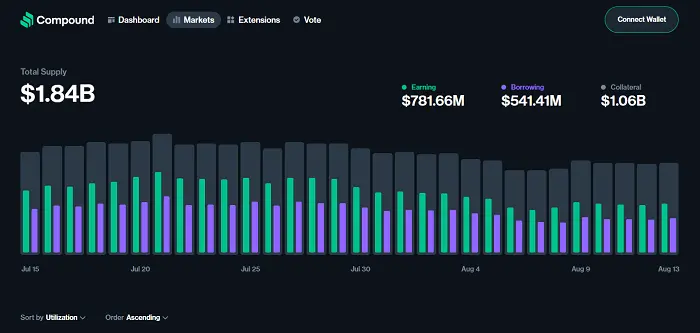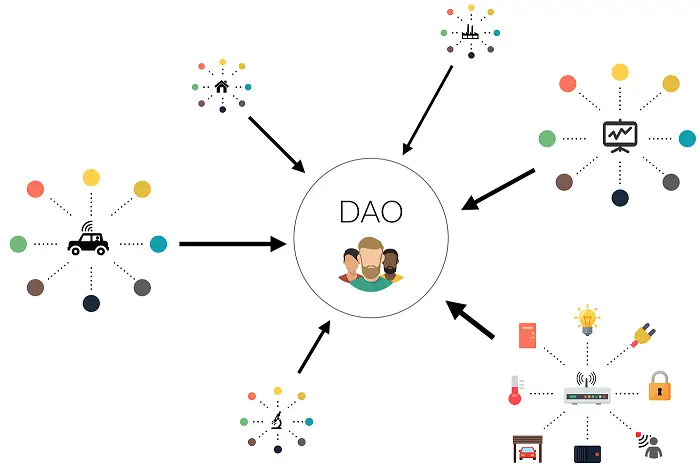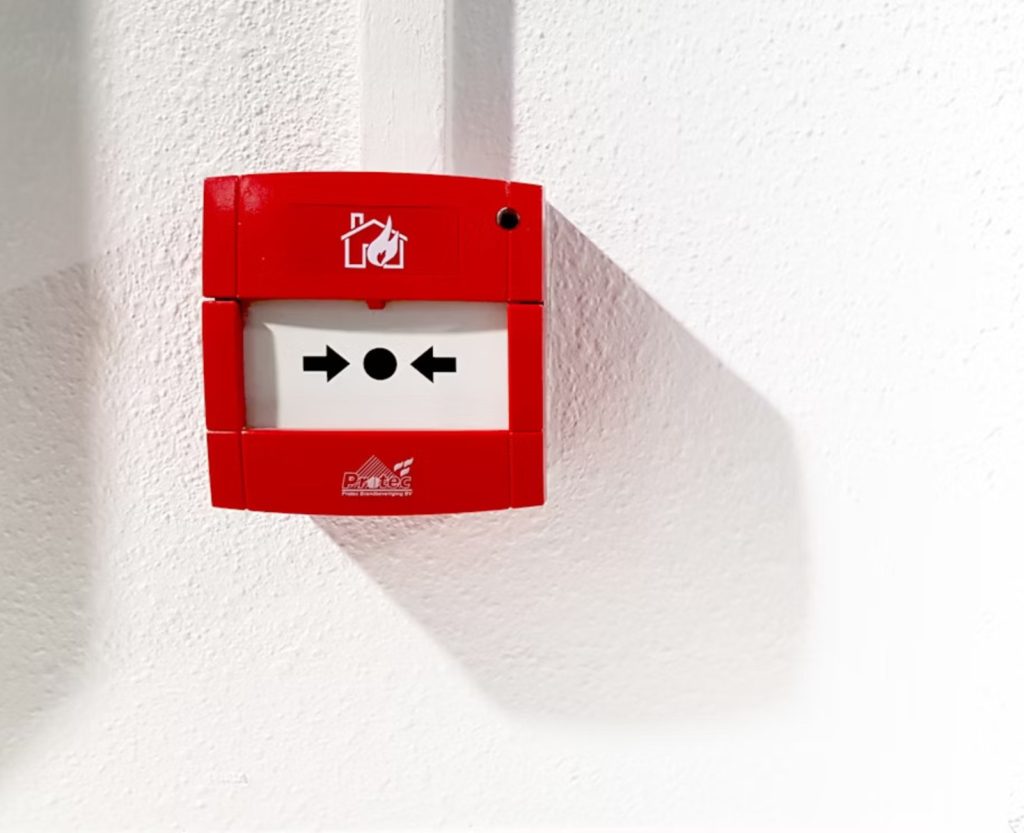The global DeFi market has experienced significant growth, reaching $13.61 billion in 2022. Experts predict continued expansion at a compound annual growth rate (CAGR) of 46% from 2023 to 2030. DeFi’s potential fuels this rapid rise to improve the financial system for greater accessibility and transparency.
However, despite its promising future, DeFi has its challenges. In this blog post, we will highlight the primary DeFi risk factors developers face and how to mitigate them.
Importance of understanding DeFi risks for developers

A thorough grasp of potential decentralized finance risks is the cornerstone of building secure and stable platforms.
More specifically, DeFi relies on smart contracts, which, once deployed, can’t be altered. This immutability presents a critical challenge: any vulnerabilities or coding errors become permanent weaknesses, potentially leading to significant financial losses.
If developers want to address this, they must be well-versed in standard attack methods like reentrancy attacks, flash loan exploits, and Oracle manipulation. By familiarizing themselves with these threats, developers can leverage the best coding, testing, and auditing practices. These practices safeguard user assets and foster trust within the DeFi ecosystem.
Furthermore, a deep understanding of the risks of decentralized finance empowers you to innovate responsibly. As DeFi matures, smart contracts become more complex, and protocols become increasingly interconnected. This growth increases the potential for systemic risks.
Developers with robust risk management skills can design systems that address individual vulnerabilities and contribute to the DeFi infrastructure’s overall resilience. This proactive approach is vital for establishing a sustainable and secure DeFi environment. Ultimately, this fosters trust, attracts users and investors, and paves the way for the widespread adoption of decentralized financial services.
In essence, developers become guardians of innovation and security within this dynamic field by understanding the DeFi risks we will specify directly in the next section.
- Read more: 10+ Best DeFi development companies in 2025
Common risks in DeFi development

Smart contract vulnerabilities
Smart contracts, the automated programs on blockchains powering DeFi, are vulnerable to exploits. Weaknesses in their code can be expensive.
Reentrancy attacks (for example, the one on Poly Network where a hacker drained millions) trick transactions into running multiple times. Some other vulnerabilities include integer overflows, where calculations exceed limits, and bugs like TinyMan’s, where a hacker exploited a flaw to steal funds. These issues raise concerns about “Is decentralized finance safe?”
Regulatory risks
DeFi also faces uncertainty as a consequence of unclear regulations. Platforms risk being classified as unregistered securities, just like LBRY. The Securities Exchange Commission (SEC) argued that LBRY’s tokens functioned like stocks, requiring registration. This move might establish a benchmark for other DeFi projects.
It’s worth noting that DeFi operates in a grey area, and the SEC is pushing for stricter controls. The SEC’s lawsuit against Ripple Labs, alleging their XRP token was an unregistered security, highlights these risks.
To avoid potential legal issues, you should stay abreast of evolving DeFi regulations locally and internationally. This way, you can proactively adapt your practices to ensure compliance and mitigate unnecessary decentralized finance regulation risks.
Security risks
Aside from DeFi regulation risks, there are relevant security ones. For example, decentralized exchanges (DEXs) offer advantages like self-custody but come with security burdens. Unlike centralized exchanges holding user funds, DEX users manage their private keys, essential for accessing crypto assets. If compromised, stolen private keys can lead to lost funds.
To mitigate these DEX security risks, you can consider the following:
- Utilizing decentralized oracles: DEXs rely on oracles to fetch accurate exchange rates. People can manipulate centralized oracles like a single exchange. Decentralized oracles gather data from multiple sources, offering a more reliable and tamper-proof solution.
- Disaster recovery plans: Unexpected events can occur. Having a plan in place, such as decentralized insurance or the ability to upgrade contracts, can help minimize damage.
Financial risks
Now, let’s move on to another common DeFi risk. DeFi offers exciting financial opportunities but comes with inherent risks.
Liquidity pools, a cornerstone of DeFi, expose users to impermanent loss. It occurs when the price of deposited assets fluctuates between deposit and withdrawal. If the price of one asset increases significantly, your overall pool share value might decrease, leading to a loss upon withdrawal.
Another risk of DeFi stems from price volatility and Oracle manipulation. Price oracles provide real-world data to DeFi applications, such as DEX. If compromised, Oracles can provide inaccurate price feeds, leading to unfair trades or manipulated DeFi functions.
For instance, attackers could exploit vulnerabilities to inflate asset prices, allowing them to profit while harming other users.
Operational risks
DeFi’s rapid growth presents challenges in managing its operational efficiency. One critical high risk Defi concern is scalability. Like traditional systems, blockchains can need help with a surge in transactions. This issue can result in network congestion, causing delays, higher transaction fees, and even limited user access. Imagine waiting hours for a simple swap!
Interoperability is another DeFi risk. It’s the ability for different blockchains to communicate. DeFi thrives on a diverse ecosystem of protocols and blockchains, each with its own rules. Still, this very diversity creates a communication barrier. Without proper bridges between blockchains, DeFi applications become isolated, hindering some aspects:
- Limited liquidity: Fragmented DeFi ecosystems restrict access to the entire pool of crypto assets. This restriction can make finding the best rates or even the specific assets you need harder.
- Reduced efficiency: DeFi transactions struggle when blockchains can’t talk to each other. This issue may lead to slower and more expensive transactions and complicate finding the most competitive prices for your crypto trades.
- Innovation slowdown: Limited communication between blockchains discourages the development of new DeFi products and protocols. If new inventions can’t seamlessly integrate with existing systems, it stifles creativity and innovation.
Best practices for developers to mitigate DeFi risks – Tools revealed
What’s next after acknowledging the DeFi risks and the decentralisation illusion? Indeed, it’s figuring out how to navigate this landscape safely. Let’s explore the best practices for DeFi risk management.
Smart contract audits
As mentioned above, smart contracts, the self-executing code powering DeFi applications, are susceptible to vulnerabilities that could lead to financial losses. How can these risks be mitigated? You can rely on third-party smart contract audits that have become an industry standard.
Imagine a digital vault holding your valuable crypto assets. Like a flawed smart contract, a poorly coded lock on that vault could leave it vulnerable to theft. Third-party audits act as security experts, meticulously examining the code for weaknesses and potential exploits.
These audits are crucial for both users and developers. Users gain peace of mind knowing a project prioritizes security by having its code scrutinized by independent professionals. For developers, a successful audit is a badge of honor when demonstrating their commitment to building secure and trustworthy products without decentralized finance risks.
That said, not all audits are created equal. Scam auditors exist; they offer superficial reports that provide a false sense of security. Here’s where reputable firms like Trail of Bits, OpenZeppelin, and CertiK come in.
Leading audit firms and tools:
- Trail of Bits: A prominent security firm offering comprehensive smart contract audits.
- OpenZeppelin: Providing security solutions and audit services for blockchain projects.
- CertiK: A leading blockchain security platform focusing on smart contract audits.
Popular automated analysis tools:
- MythX: A popular tool for automated smart contract security analysis.
- Slither: An open-source static analysis tool designed explicitly for Solidity smart contracts.
- Securify: Analyzing smart contracts for common security vulnerabilities.
Code reviews and testing
Rigorous testing is essential to reducing the DeFi risk. Two key components of this process are unit testing and integration testing.
Unit testing focuses on individual code modules, ensuring each one functions as intended. It can be thought of as examining each brick before building a wall. Benefits include early bug detection and reduced costs, as fixing errors at the code level is more straightforward than later in development. Developers typically perform unit tests.
On the other hand, integration testing looks at how different modules interact. Here, the focus is on the mortar between the bricks, ensuring a seamless wall. This broader test, often performed by a separate team, verifies communication between various application parts.
While unit tests are quicker, integration tests can uncover issues that are trickier to isolate. They also require less code access than unit tests, which delve into the code’s inner workings.
Both testing types are crucial, providing a robust quality assurance combination. For smart contracts, specific tools and frameworks exist to streamline the testing process and remove risks of decentralized finance:
- Truffle Suite: Offers a development environment and testing framework.
- Hardhat: A powerful tool for compiling, testing, and debugging Solidity code.
- Remix IDE: An online tool that provides a comprehensive environment for writing, testing, and debugging Solidity contracts.
Security measures
Another best practice to mitigate the risk of DeFi is implementing multi-signature wallets. These wallets function like digital vaults, requiring multiple keys to unlock, providing an extra layer of defense for your DeFi holdings.
Here’s how multi-signature wallets fortify your DeFi investments:
- Reduced DeFi risk: Distributing signing authority diminishes the risk of a single point of failure. The remaining keys can block unauthorized transactions even if one key is compromised.
- Cooperative management: Ideal for Decentralized Autonomous Organizations (DAOs) or investment groups, multi-signature wallets ensure shared control over DeFi funds. No single member has unilateral control. This approach is equal to fostering trust and reducing internal theft risks.
- Secure borrowing and lending: In DeFi lending protocols, where you deposit crypto to earn interest, multi-signature wallets can act as a secure escrow, ensuring only authorized withdrawals occur.
You can also consider using decentralized insurance protocols alongside multi-signature wallets. These protocols offer financial protection against smart contract hacks, flash loan attacks, and other DeFi-specific vulnerabilities.
Regulatory compliance
Regulators are grappling with DeFi. So, keeping up with their decisions is vital.
Traditionally, finance relies on central authorities. DeFi cuts out the middleman, meaning a need for more centralized oversight. Regulations are being developed to address this gap, focusing on consumer protection, market stability, and preventing illegal activity.
The regulation of DeFi is still evolving and varies by region. Some countries embrace DeFi’s innovation potential, while others prioritize caution. Understanding these differences is essential for those involved in DeFi.
Case studies of mitigating DeFi risks
The best practices outlined above will help developers mitigate the Defi risk effectively. These practices will not only contribute to safer DeFi platforms, but also promote greater trust and adoption of Decentralized Finance as a whole. As we navigate the complexities of this emerging field, these best practices will be crucial in shaping the future of finance.
Now, let’s dive into real-world examples through case studies of mitigating decentralized finance risks.
1. Compound

Compound is a decentralized lending protocol that allows users to borrow cryptocurrencies. This successful DeFi project highlights how the above-mentioned practices can be implemented effectively.
The DeFi risk management strategies:
- Secure governance: Compound has implemented a governance model where COMP token holders vote on protocol changes. This decentralized approach helps distribute decision-making power and reduces the risk of centralized control.
- Audits and security practices: Compound regularly undergoes security audits by reputable firms like OpenZeppelin to identify and mitigate potential vulnerabilities. They also have a bug bounty program to incentivize external security researchers to find and report bugs.
- Oracle mechanisms: Compound uses secure and reliable price oracles to ensure accurate and tamper-proof asset price feeds, mitigating price manipulation risks.
Takeaway: Compound’s success emphasizes the importance of a multi-pronged approach to risk management. Distributing control, prioritizing code security, and employing reliable data sources are crucial for DeFi projects to thrive.
2. The DAO

The DAO, a pioneering project on the Ethereum blockchain, serves as a stark reminder of the consequences of inadequate management of DeFi risks. Launched in 2016, The DAO aimed to create a community-governed venture capital fund. Yet, its story ended abruptly due to a critical security flaw.
Here are some key takeaways about The DAO’s failed projects and lessons learned:
- Security Breach: In 2016, The DAO was hacked due to a vulnerability in its smart contract code, resulting in the loss of $60 million worth of Ether. The incident highlighted the importance of rigorous security audits and testing before deploying smart contracts.
- Lesson: This failure underscored the need for comprehensive security practices, including formal verification methods and third-party audits, to identify and address vulnerabilities before attackers can exploit them.
Conclusion
Navigating the decentralized finance space requires a keen understanding of the inherent risks involved. This blog post has explored developers’ common challenges in DeFi development and provided valuable DeFi risk mitigation strategies.
By prioritizing robust practices for DeFi risk management, such as smart contract audits, rigorous testing, and multi-signature wallets, developers can build trust and foster a secure user environment. Moreover, staying informed about DeFi regulations is crucial for ensuring compliance and minimizing legal risks.
How useful was this post?
Click on a star to rate it!
Average rating / 5. Vote count:
No votes so far! Be the first to rate this post.




